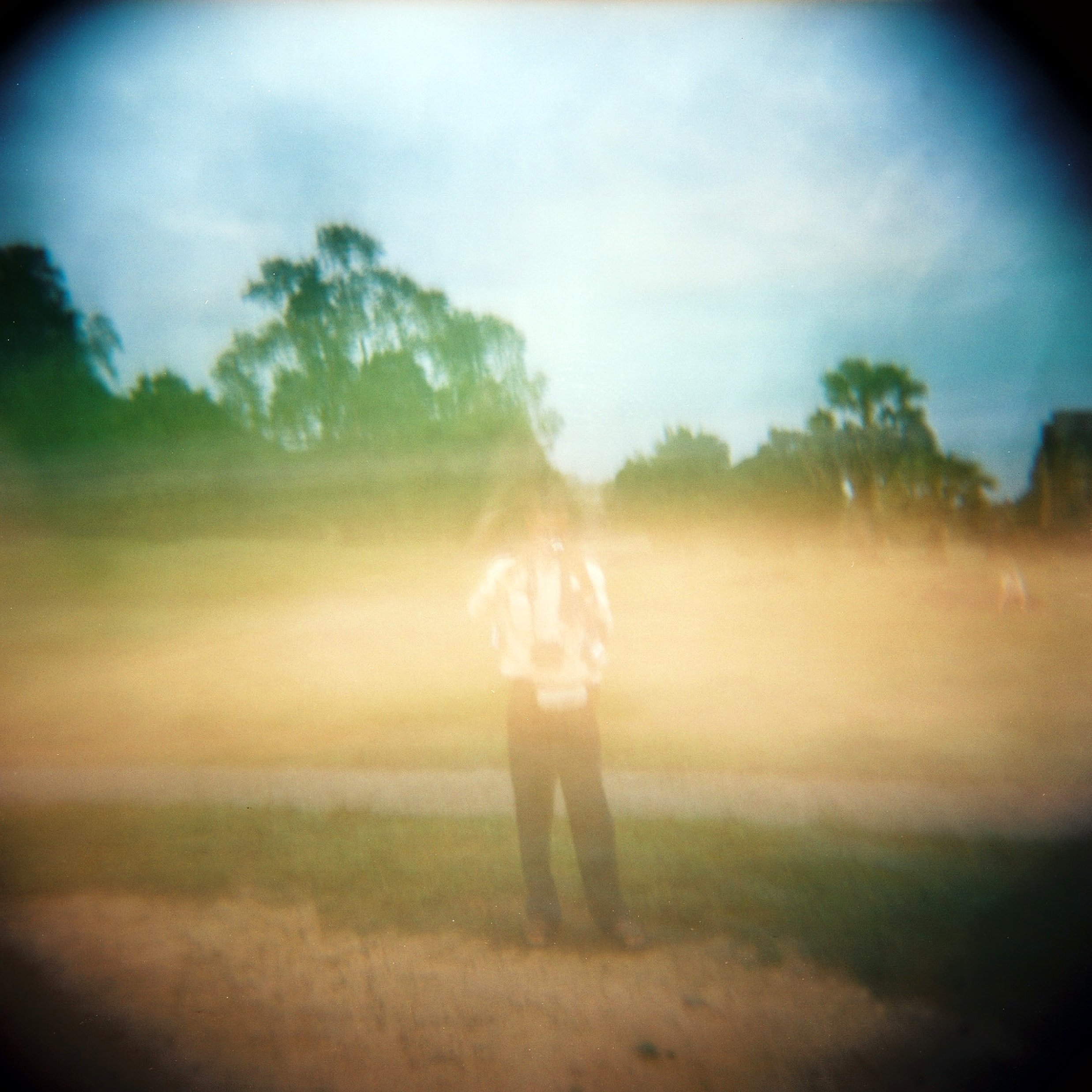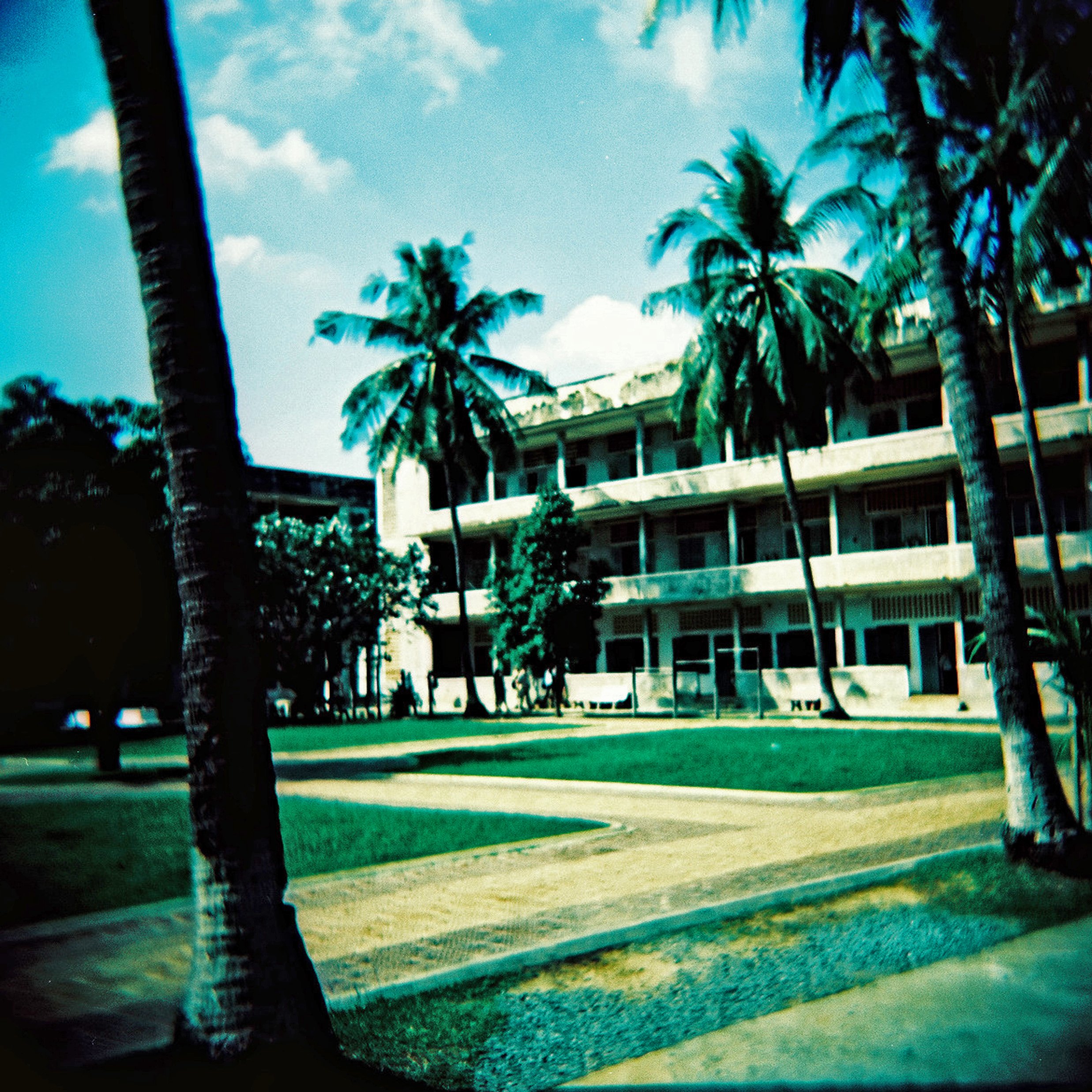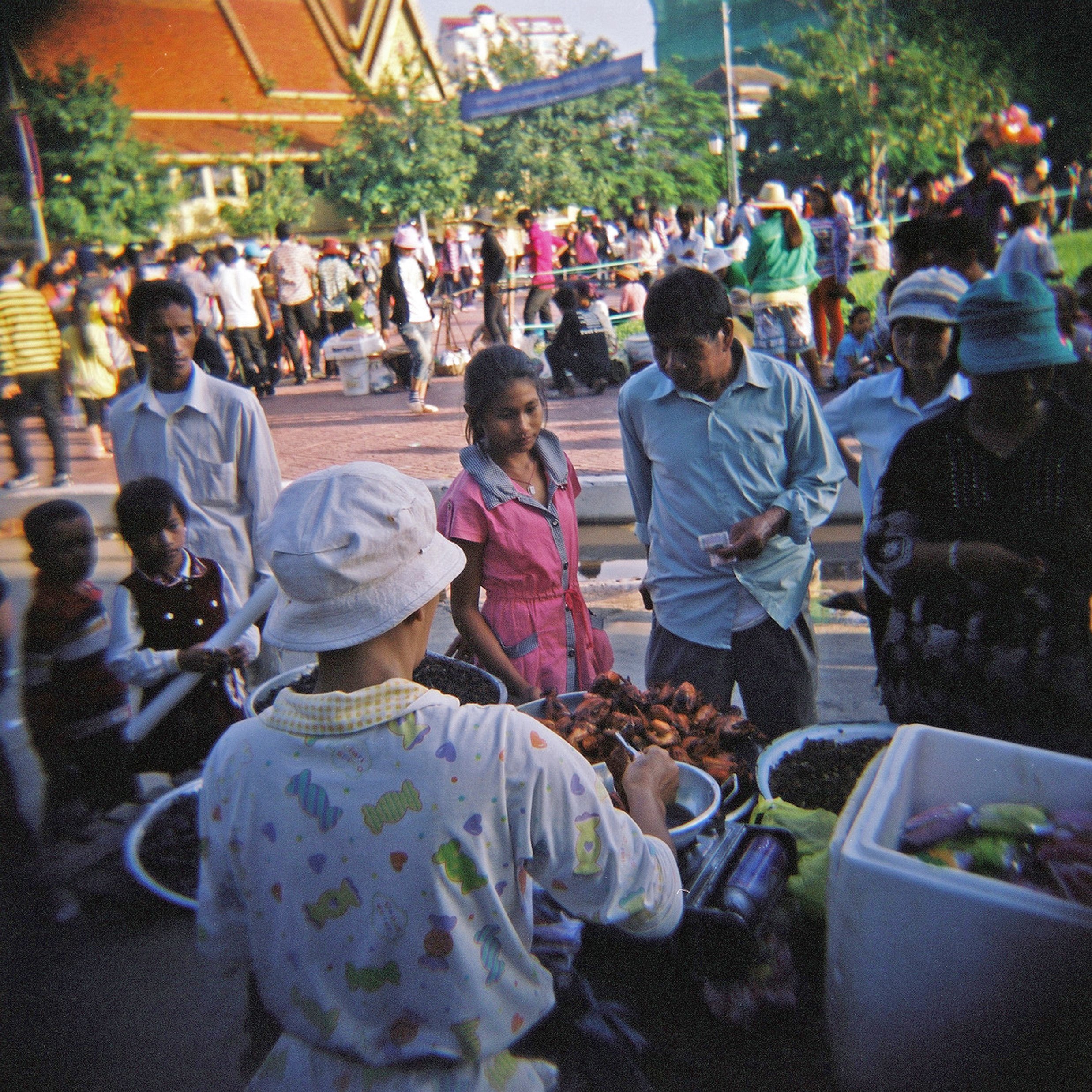ON FILM: CAMBODIA HOLGA PHOTOGRAPHY
DAVID BELLARD ARCHIVE PHOTO SERIES
CAMBODIA
FILMED ON LOCATION:
PHNOM PENH
TUOL SLENG GENOCIDE MUSEUM
CHOEUNG EK (THE KILLING FIELDS)
ALL PHOTOS SHOT ON 120 MEDIUM FORMAT FILM WITH A HOLGA CAMERA.
KILLING FIELDS MEMORIAL, CAMBODIA, 2010 • FUJI PORTRA 400, HOLGA FIXED LENS
These are the remains of Cambodians who were massacred by the Khmer Rouge regime during their genocidal reign from 1975-79, and buried in one of the notorious “killing fields” - mass graves that dot the countryside like scars where the Pol Pot regime executed and buried hundreds of thousands of political prisoners. I took this photo inside the Buddhist memorial in Choeung Ek, site of the largest of the Killing Fields, where they have interred the remains of thousands of victims in a memorial glass tower. The Memorial at Choeung Ek and the preserved burial pits in the fields are stark monuments that serve as a lasting reminder of a horrific crime against humanity.
KILLING FIELDS MEMORIAL, CAMBODIA, 2010 • FUJI PORTRA 400, HOLGA FIXED LENS
KILLING FIELDS MEMORIAL, CAMBODIA, 2010 • FUJI PORTRA 400, HOLGA FIXED LENS
TUOL SLENG GENOCIDE MUSEUM, CAMBODIA, 2010 • CROSS-PROCESSED KODAK EKTACHROME, HOLGA FIXED LENS
In the 1970’s, The Khmer Rouge Army transformed a high school in Phnom Penh into the notorious Security Prison S-21, better known as Tuol Sleng. After the defeat of Pol Pot and the Khmer Rouge, the prison was preserved, like the Nazi concentration camps in Europe, as haunting evidence of the genocide that took place in Cambodia. I shot this photo in the courtyard of complex using expired slide film, which I later cross-processed as C-41. The combination of the Holga’s soft focus and the color shifts and contrasts that come with cross-processing gave this photo an uncanny tourist photo aesthetic, like a poorly printed color photo book from the Sixties.
TUOL SLENG GENOCIDE MUSEUM, CAMBODIA, 2010 • FUJI PORTRA 400, HOLGA FIXED LENS
Orange-robed monks roam the grounds of Tuol Sleng behind the barbed wire remnants of the Khmer Rouge.
TUOL SLENG GENOCIDE MUSEUM, CAMBODIA, 2010 • FUJI PORTRA 400, HOLGA FIXED LENS
Remnants of an interrogation room at the Tuol Sleng Genocide Museum. Of the 20,000+ people imprisoned and murdered at S21, only seven men survived to give firsthand accounts of how the prison operated and the atrocities committed there. One of the survivors, Vann Nath, detailed his account both visually in numerous paintings (on display at the museum) and in his memoir “A Cambodian Prison Portrait”, which reads like Solzhenitsyn’s “Gulag Archipeligo” edited by a court stenographer.
PHNOM PENH, CAMBODIA, 2010 • CROSS-PROCESSED KODAK EKTACHROME, HOLGA FIXED LENS
PHNOM PENH, CAMBODIA, 2010 • CROSS-PROCESSED KODAK EKTACHROME, HOLGA FIXED LENS
PHNOM PENH, CAMBODIA, 2010 • CROSS-PROCESSED KODAK EKTACHROME, HOLGA FIXED LENS
PHNOM PENH, CAMBODIA, 2010 • CROSS-PROCESSED KODAK EKTACHROME, HOLGA FIXED LENS
PHNOM PENH, CAMBODIA, 2010 • CROSS-PROCESSED KODAK EKTACHROME, HOLGA FIXED LENS
PHNOM PENH, CAMBODIA, 2010 • CROSS-PROCESSED KODAK EKTACHROME, HOLGA FIXED LENS
PHNOM PENH, CAMBODIA, 2010 • FUJI PORTRA 400, HOLGA FIXED LENS
PHNOM PENH, CAMBODIA, 2010 • FUJI PORTRA 400, HOLGA FIXED LENS
PHNOM PENH, CAMBODIA, 2010 • FUJI PORTRA 400, HOLGA FIXED LENS
PHNOM PENH, CAMBODIA, 2010 • FUJI PORTRA 400, HOLGA FIXED LENS
PHNOM PENH, CAMBODIA, 2010 • FUJI PORTRA 400, HOLGA FIXED LENS
ANGKOR WAT, CAMBODIA, 2010 • FUJI PORTRA 400, HOLGA FIXED LENS
ANGKOR WAT, CAMBODIA, 2010 • FUJI PORTRA 400, HOLGA FIXED LENS
NOTES ABOUT THIS SERIES
The photos in this series were shot using a simple fixed-lens Holga camera with different types of 120 medium format film. For anyone unfamiliar with Holga cameras and the world of Lomography, I highly recommend a visit to this Holga website where you can learn everything you ever wanted to know about this interesting little plastic camera. There is quite a large cult following of Holga users around the world, drawn to the vintage aesthetics and often unpredictable results in the images produced by this camera. I was an avid Holga user from 2006 to 2012, and I used it to document a lot of my international travels, though I stopped as I gradually began using more professional medium format cameras. I do still occasionally use a special Holga for wide format photographs, but just like a regular Holga, it has almost no way to adjust exposure, meaning it will only produce good photos in sunny conditions.
I also shot several rolls of Super 8 film in Cambodia which I compiled for a film series Cinema Super 8 in 2015. I mixed the soundtrack from Cambodian radio field recordings and various artists that were bouncing around my playlist at the time and fit the mood of the film.
I also shot a limited amount of video with my old flipcam (anyone remember those?) because in 2010 I think my phone was a Blackberry with a terrible camera, so I wasn’t shooing many digital photos or videos, however I have a few video gems from the trip..



















